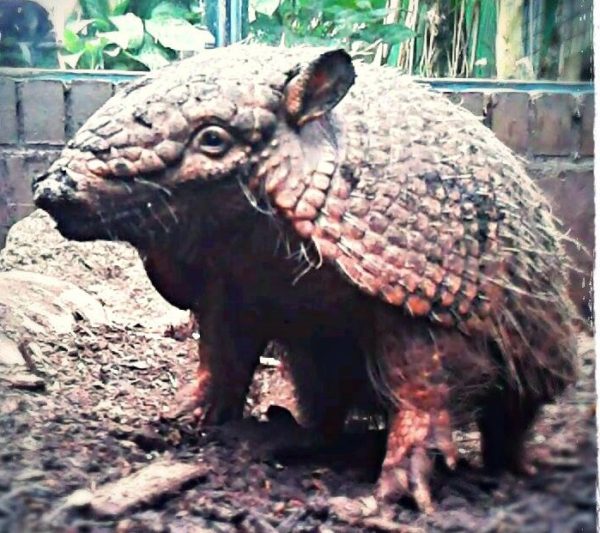Six-banded armadillo
Euphractus sexinctus

A den for the night
Six-banded armadillos dig big dens up to two metres deep to sleep in at night, but only stay in the same place for a few days at a time. Unlike most armadillos, the six-banded is mostly diurnal, meaning that it is active during the day time. They are mostly solitary, using scent to mark their territories.
They can be found across much of South America, in grasslands, rainforests and plantations.
Did you know?
Armadillos are the only species apart from humans that carry the leprosy bacteria. In North and South America where people and animals live in the same area it can sometimes be passed between them.
Armadillo shells are used to make a traditional instrument called a Charango, which is a bit like a small guitar.
Quick facts
| Scientific name Euphractus sexinctus | Native to South America | Rainforest layer Forest floor |
| Diet Plants, fruit, insects, small vertebrates | Size Maximum length 50cm | Weight 6kg |
| Lifespan 18 years | IUCN conservation status Least concern – learn more | CITES Appendix ii Trade allowed – learn more |
Concerns
Six-banded Armadillos have a wide range and large population so are not considered endangered. However, they are hunted in large numbers for their meat and persecuted as crop pests in agricultural areas. Armadillos are also hunted for medicinal use. Local folklore believes that placing an armadillo tail in the ear of a deaf person will cure them.
